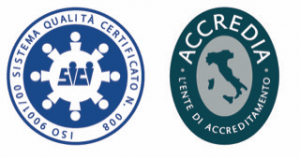As for the other types of springs (compression and traction), even in order to calculate torsion springs as correctly as possible, it is necessary to know the working environment, like the temperature, exposure to corrosive agents, the number of expected cycles and frequency.
Considering these parameters is essential as they determine the choice of the correct material.
Let’s look at them one by one, explaining why they are so important.
TEMPERATURE
Materials work differently according to the temperatures to which they are subjected.
For example, EN 10270-1 wire is suitable for a working temperature between -20 and +80° C, AISI 302 stainless steel has a range between -200 and +250° C, for higher temperatures needed nickel superalloys such as Inconel or Nimonic.
EXPOSURE TO CORROSIVE AGENTS
If the working environment is exposed to sea water, acids or methane, the surface protections do not hold up and therefore a material capable of withstanding this corrosive environment is needed.
NUMBER OF EXPECTED CYCLES AND FREQUENCY
An efficient spring in static conditions could have a low fatigue life.
Also in this case, there are materals more suitable than others for long durations (EN 10270-2)…
Frequency is also important: doing 10 cycles per minute is different from doing 10 per second or 10 per hour. Only by knowing the frequency can a resonance analysis be done.
The second step for calculating the torsion spring, following the choice of material, is to consider the space available for the spring, in particular the minimum internal diameter it can have without being disturbed by the eventual pin on which the spring is in place.
WORK POINTS AND STROKE OF THE TORSION SPRING
After that, it is necessary to be aware of the expected work points, and therefore the stroke that the spring must carry out.
The angle A1 with the “unloaded” spring (mounted and slightly preloaded) and the force F1 which must be supplied in A1: the free spring will be more open than the initial angle as torsion springs, to work well, must “close” in the winding direction.
The angle A2, spring at maximum angle, and the force F2 which must be supplied in A2.
The spring will be calculated so that the angle A2 is still in the elastic range and there is no yielding.
The stroke of teh spring S will be given by A2-A1.
Alternatively, A2, F2 and the desired spring constant can be indicated.
A2 must be the maximum torsion angle that the spring can reach, even occasionally: if you leave the elastic range even once, the spring will no longer return to the free position and will be irreversibly damaged.
THE AVAILABLE SPACE AND THE LOADS OF THE TORSION SPRINGS
It my happen that not all the quotas provided can be respected: often the loads requested are incompatible with the available spaces.
When we find ourselves in this situation, we calculate the spring which, respecting the spaces, supplies the maximum load, and the spring which, respecting the required loads, has the minimum size.


